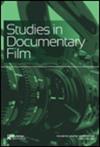澳大利亚中部的Amadeus盆地是埃迪卡拉纪前宏观生物进化试验的熔炉吗?
IF 0.8
4区 综合性期刊
Q3 MULTIDISCIPLINARY SCIENCES
Transactions of the Royal Society of South Australia
Pub Date : 2021-06-22
DOI:10.1080/03721426.2021.1935585
引用次数: 1
摘要
垂直挖洞是一种生物活动,被认为是在最早的寒武纪(埃迪卡拉纪的更古老的软体化石)进化而来,在575 - 541 Ma之间蓬勃发展,似乎仅限于占领海底/海洋界面。然而,在澳大利亚中部Amadeus盆地的前埃迪卡拉纪序列的两个层面上,有垂直管状结构,此前曾被报道为可能是生物成因:一套这样的管状结构出现在约700 Ma的Areyonga组中,而另外两个管状结构出现在更古老的Heavitree组中,可能有9.7 - 9.5亿年的历史。如果这些结构在重新检查后被证明确实是生物形成的,那么垂直穴居的最初进化可能比之前认为的早4.35亿年,这些特征将使Amadeus盆地成为一个孤立的坩埚,似乎是垂直穴居的两个进化试验,尽管试验最终失败了,原因如下所述。此外,同样的两个地层层都包含另一个最初也被描述为生物成因的结构,其中一个可能是身体化石。本文章由计算机程序翻译,如有差异,请以英文原文为准。
Was the Amadeus Basin of Central Australia a crucible for pre-Ediacaran macro-biotic evolutionary trials?
ABSTRACT Vertical burrowing is a biological activity deemed to have evolved during the earliest Cambrian, the older soft-bodied fossils of the Ediacaran Period, that thrived between 575 and 541 Ma, seemingly being restricted to occupying the seafloor/ocean interface. Yet at two levels within the pre-Ediacaran sequence of the Amadeus Basin, central Australia, are vertical tubular features that have previously been reported as possibly of biogenic origin: a suite of such tubes occurs within the Areyonga Formation, dated at about 700 Ma, while two other tubular structures occur within the older Heavitree Formation that is perhaps 970–950 million years old. Should these structures prove, on re-examination, to indeed have been biologically formed, then vertical burrowing initially evolved possibly as much as 435 million years earlier than previously believed and these features would make the Amadeus Basin an isolated crucible of, seemingly, two evolutionary trials of vertical burrowing, albeit trials that ultimately failed for reasons that are discussed. Additionally, the same two stratigraphic levels each contain another structure that was also initially described as of biogenic origin, one being a possible body-fossil.
求助全文
通过发布文献求助,成功后即可免费获取论文全文。
去求助
来源期刊
CiteScore
1.40
自引率
12.50%
发文量
17
审稿时长
>12 weeks
期刊介绍:
Published since 1880, the Transactions of the Royal Society of South Australia is a multidisciplinary journal that aims to publish high quality, peer-reviewed papers of particular relevance to Australasia.
There is a particular focus on natural history topics such as: botany, zoology, geology, geomorphology, palaeontology, meteorology, geophysics, biophysics, soil science and environmental science, and environmental health. However, the journal is not restricted to these fields, with papers concerning epidemiology, ethnology, anthropology, linguistics, and the history of science and exploration also welcomed.
Submissions are welcome from all authors, and membership of the Royal Society of South Australia is not required.
The following types of manuscripts are welcome: Reviews, Original Research Papers, History of Science and Exploration, Brief Communications, Obituaries.

 求助内容:
求助内容: 应助结果提醒方式:
应助结果提醒方式:


